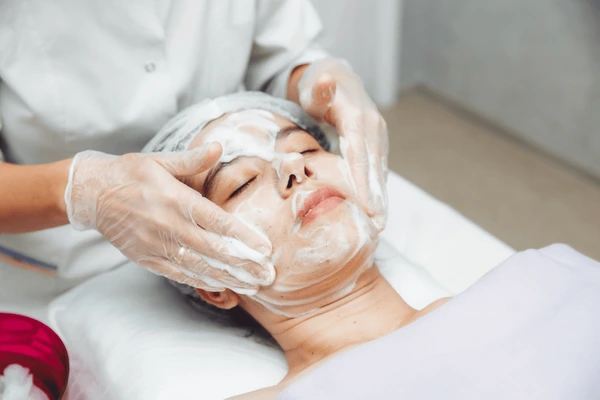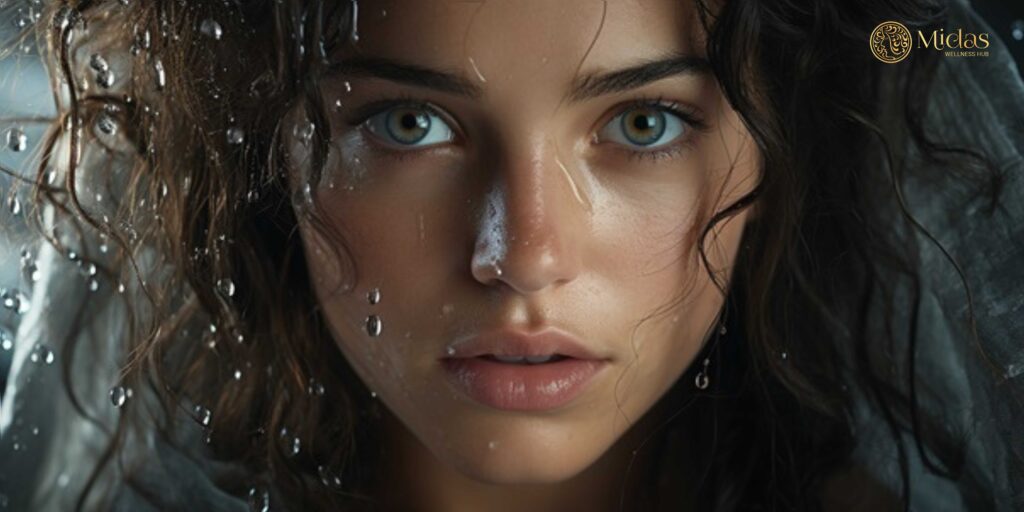
Skin Peels for Pigmentation: Are They Safe in Monsoon?

Skin Peels for Pigmentation
Let’s bust some myths and understand why this season might actually be the best time to treat your spots.
Have you been told to “avoid skin peels in monsoon” or that “your skin becomes too sensitive when it’s humid”?
Sounds familiar? You’re not alone.
Many people feel unsure about doing chemical peels for pigmentation during Mumbai’s monsoon season. And while it’s smart to be cautious, it’s also important to separate myth from reality.
Because truth be told — monsoon is actually one of the safest seasons to do skin peels.
Let’s dive into why your skin might thank you for starting your pigmentation journey now instead of waiting for winter.
The Monsoon Mindset: Why We Worry About Peels
During monsoon, skin often feels:
-
Sticky
-
Congested
-
Sweat-prone
-
Prone to breakouts or dullness
So most people assume adding a chemical peel on top of that could cause more problems. Plus, there’s the fear of sun exposure after a peel. Which is valid — because after exfoliation, your skin can be slightly more vulnerable to UV rays.
But here’s the twist: less sunlight during monsoon = less UV damage = safer healing environment.
Still feeling hesitant? Let’s walk you through the science and soothe your fears.
First, What Exactly Is a Chemical Peel?

A chemical peel is not some scary, skin-burning procedure. It’s a controlled exfoliation process, done under expert supervision, to:
-
Remove dead, damaged outer skin layers
-
Encourage new cell turnover
-
Fade pigmentation and blemishes
-
Brighten dull skin
Depending on the type of peel, it penetrates the epidermis (top layer) or upper dermis (deeper layer) to help resurface smoother, clearer skin.
There are different types of peels for pigmentation:
-
Glycolic acid – great for surface-level dullness and melasma
-
Lactic acid – mild and suitable for dry/sensitive skin
-
Salicylic acid – good for acne-prone skin
-
TCA peels – deeper peels used under strict medical guidance
-
Yellow peels or kojic acid blends – used for Indian skin prone to pigmentation
At Midas Wellness Hub, we carefully customize the peel to your skin type, concern, and climate sensitivity.
So, Are Peels Safe During the Monsoon?
YES — when done at a clinic, by trained professionals, using controlled methods.
Here’s why monsoon is actually an ideal time for skin peels, especially for pigmentation:
1. Less Sun Exposure = Less Risk Post-Peel
One of the biggest concerns post-peel is photosensitivity — the skin becomes more sensitive to sunlight, increasing the risk of tanning or post-inflammatory pigmentation (PIH).
But in Mumbai monsoons:
-
The UV index is lower
-
Days are cloudier and shorter
-
You’re less exposed to direct sunlight
That means your skin heals safely, without the sun sabotaging your results.
2. Humidity Helps Prevent Excess Dryness
Some people worry about dryness and flakiness post-peel. But moderate humidity actually helps your skin retain moisture and minimizes visible peeling or crusting.
This means:
-
Less irritation
-
Easier healing
-
Better comfort
Just make sure to keep your face clean, avoid rubbing, and follow your aftercare religiously.
3. Monsoon Pigmentation Gets Worse — So Start Early

Let’s be honest — the humid weather worsens skin issues like:
-
Melasma
-
Tanning
-
PIH (Post-inflammatory hyperpigmentation)
-
Acne scars
Delaying treatment only lets pigmentation get deeper and more stubborn.
Starting clinical peels now helps:
-
Control melanin overproduction
-
Exfoliate dark patches early
-
Build momentum for brighter skin before winter or festive season
4. Fewer Outdoor Plans = Easier Downtime
You’re likely going out less during heavy rains. That means:
-
More time indoors = easier to follow post-peel precautions
-
Less risk of accidental sun exposure
-
No beach trips or treks to mess with recovery
It’s the perfect window to do a few skin-improving treatments without social FOMO.
Monsoon Peel Myths You Need to Stop Believing
Let’s quickly bust some common misconceptions:
| Myth | Reality |
|---|---|
| “Peels make skin red and damaged” | Not true — mild peels cause gentle exfoliation, not damage, when done correctly. |
| “Peels thin the skin” | No, they actually stimulate collagen and improve thickness and texture over time. |
| “You can’t step out after a peel” | You can — just with sunscreen and basic care. |
| “You should only do peels in winter” | Monsoon is equally safe (and even better in some cases). |
What Results Can You Expect from Peels for Pigmentation?
With a series of peels (usually 3–6 spaced 2–3 weeks apart), you’ll notice:
-
Lightening of brown patches
-
Smoother skin tone
-
Fading of acne scars
-
Reduced tanning
-
Brighter, healthier glow
Consistency is key. Think of it like resetting your skin gradually, not instantly bleaching it overnight.
How to Keep It Safe
Here’s how we ensure safe, effective monsoon peels at Midas Wellness Hub:
1. Pre-peel skin priming
We prepare your skin with gentle actives to avoid shocks or reactions.
2. Customized peel strength
We don’t follow a one-size-fits-all approach. Every peel is tailored based on your skin type, sensitivity, and goals.
3. Post-peel care guidance
We give clear instructions, handpicked calming products, and follow-ups so you recover comfortably and glow.
4. Sunscreen strategy
We provide sunscreen recommendations and lifestyle tweaks to avoid any post-peel pigmentation.
What We Offer at Midas Wellness Hub
At Midas Wellness Hub, located in Borivali and soon across other Mumbai suburbs, we’ve helped hundreds of clients lighten pigmentation safely — even during the rains.
Our monsoon-safe Pigmentation Peel Program includes:
-
Fruit acid peels (mild, brightening)
-
Yellow peels (for deeper melasma)
-
Azelaic acid or kojic peels (gentle and anti-inflammatory)
-
Laser Toning add-ons (for more stubborn pigmentation)
-
Post-peel hydration sessions to soothe and nourish
Everything is backed by doctor-led protocols, so you’re never left guessing.
In Conclusion: Why Wait?
Monsoon doesn’t mean you pause your skincare — it means you get smart with it.
Don’t let the fear of a few clouds delay your journey toward clear, even-toned skin. With professional help, peels can become your best friend in fighting pigmentation.
And the best part? You’ll walk into the festive season glowing — without filters.
📍 Come visit us at Midas Wellness Hub
💬 Book a skin consultation and let’s decide the best monsoon peel for your unique skin.
✨ Because the best time to begin is not later. It’s now.

